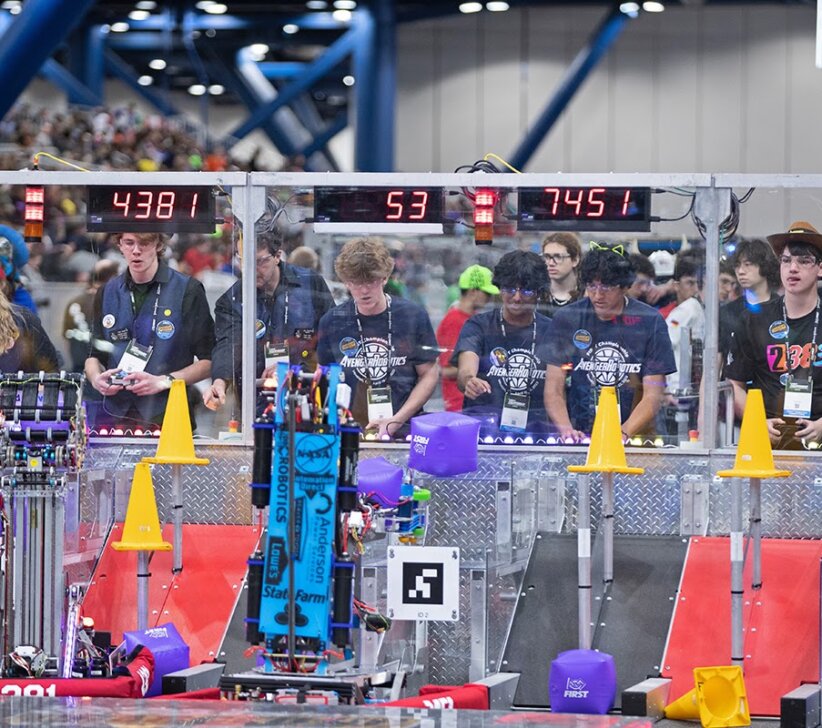And the 2018 Tony Award for Best Sound Design of a Play goes to. …” Silence. A tight shot of the nominees fills the screen. All are unrecognizable to us at home.
The stage manager; the set designer; the lighting director; the costume designer; the makeup artist; and the sound engineer – we know these folks … they are all part of the tech crew, the often unknown superheroes of a production. Yet they make the magic! The amazing process of stage tech and design is creative, challenging and so much more. And, so much more for the kids that learn how to create it.
A Learning Process
I’m so very intrigued by the art and craft of stage tech. The stage hands, engineers, deck crew are the wizards behind every production. We all know they are there but once the curtain goes up we quickly forget (and that is part of the magic). A good theater tech program will introduce, teach and encourage real skills and some invaluable real life lessons.
“Dare to fail,” says Jill Abusch artistic director and co-founder of the Play Group Theatre (PGT) in White Plains that offers a Design Tech program with areas of concentration in costume, scenic and technical design and engineering. “We provide opportunities for active experimentation and exploration, for every voice to be heard and listened to, and for mistakes to be a welcomed part of the creative process.” Mistakes are an integral part of learning and so necessary for our kids. Instructing through a working art process teaches accountability, innovation and problem solving. It teaches the importance of digging deep into your own voice. A student can explore every angle and then decide which is the best fit for the task at hand. This is significant for any child at any age and will carry them far in life, whether they pursue a career in theater or art or in something else.
The Program
The Playgroup Theatre tech design program is a hands-on learning experience that is often taught by established industry professionals. Students build sets, mix audio, hang lights, design props and costumes, work computers for digital stage effects and may have an opportunity to be the stage manager and “call” the show.
The program is designed to be non-competitive and rewarding. “Fostering every child and the belief that each child has a unique talent and sense of purpose,” says Gabrielle Mason of the PGT program. It is in tech class either at school or at PGT that her son, now 16, feels his best self. “It is the connection and mutual admiration they develop for each member of the crew that allows them to thrive,” says Mason.
A tech program can help kids build their confidence and discover what support is all about. “We teach our students to really look at each other, they see each other. Nobody is invisible. Nobody gets overlooked. They gain a tremendous amount of admiration and respect for each other,” says Abusch. Their confidence and inspiration becomes evident in the work.
An Ultimate STEAM Class
Tech and design is the ultimate STEAM class. It is a playground for tinkering using tools, clothing, makeup and technology. It inspires creative thinking that encourages thinking way out of the box and takes it one step further in requiring that you figure out how to make it work. Sometimes without clueing in the audience as to how it was achieved. Giving an actor the necessary guise to inhabit their role is no joke, nor is building a working prop that makes a scene come alive. And lighting the stage to create just the right mood for the audience to laugh or cry and sometimes both – that too. Actors know that these tech crew roles are essential to their success.
It is a gift for a child to have the opportunity to explore in this arena. It goes beyond the obvious art and craft. Perhaps this is why, here in tech, that many kids find themselves a second home. There is an intangible bond among them, which is evident watching them work sometimes independently but always as a creative whole. The student is rewarded with a sense of ownership, sense of purpose and great mutual respect.
On With the Show
And in the end, after the final curtain, there is this. There is a production, which provides a continuous payday. The show ends but the lessons learned run deep and the relationships formed are long-lasting. I was not surprised to learn these theater peeps have a somewhat magical ritual. At PGT, a tradition was established with the very first performance more than 20 years ago. Before each perfromance everyone comes together to form one big circle moments before the curtain goes up. The details of the ritual that follows can vary from director to director but the essence is the same. This coming together allows everyone to take a quiet moment, to make eye contact, to focus on the task at hand and to commit to the support and energy they will give to and take from each other during the show.
Sometimes they hold hands and send a hand squeeze or pulse around the circle, sometimes each member shares a word representing what they will be working on during the show – perhaps ‘energy’ or ‘focus’. And sometimes they use Angel Cards. Each person pulls a random card that has an affirming word printed on it. Each member holds their card close to their heart. One by one they each call out their word. And the group collectively cheers, “Yes!”
“… and the 2018 Tony Award for Best Sound Design of a Play goes to … Gareth Fry for Harry Potter and the Cursed Child, Parts 1 and 2.” There is a genuine and joyful round of applause in the theater. And for all of us watching from home, though we may not recognize the name, we recognize the significance of this creative contribution, achievement and talent.
It’s magic!
Elena Deutsch-Glantz is a Westchester mom, former talent agent and manager and current consultant on obtaining a successful career as an actor. She is married and has three children and two dogs that help keep it real.









